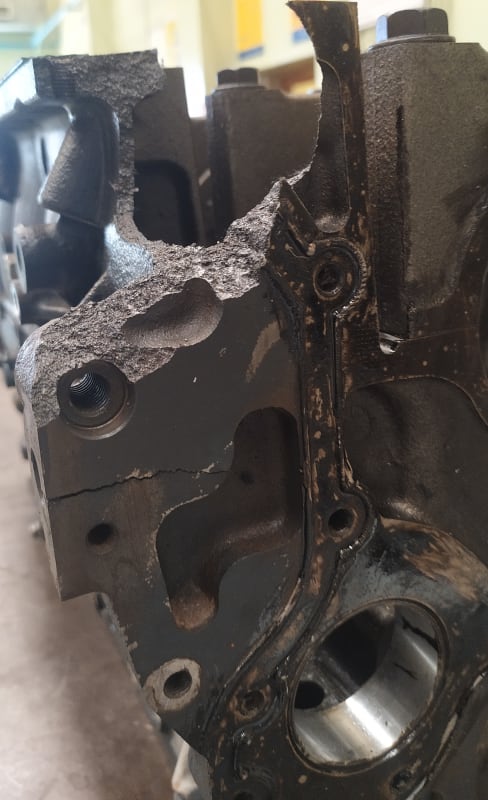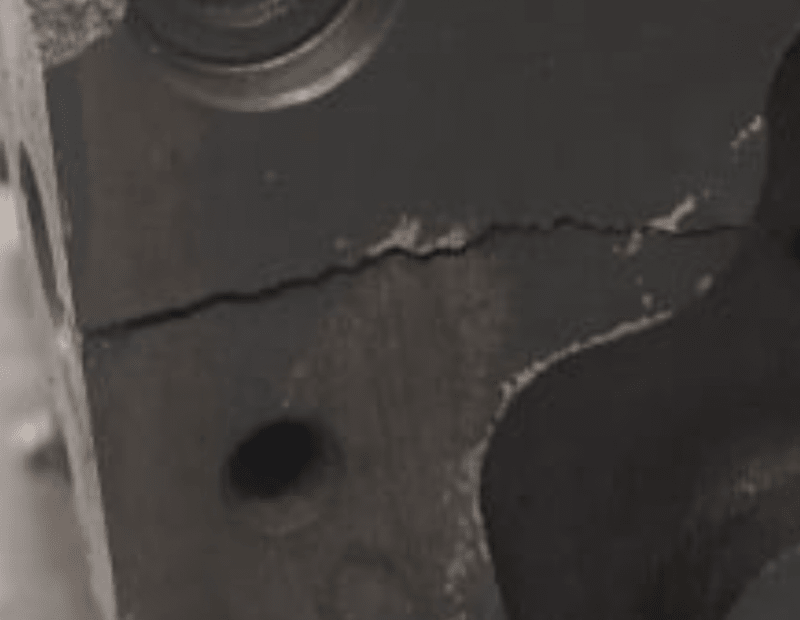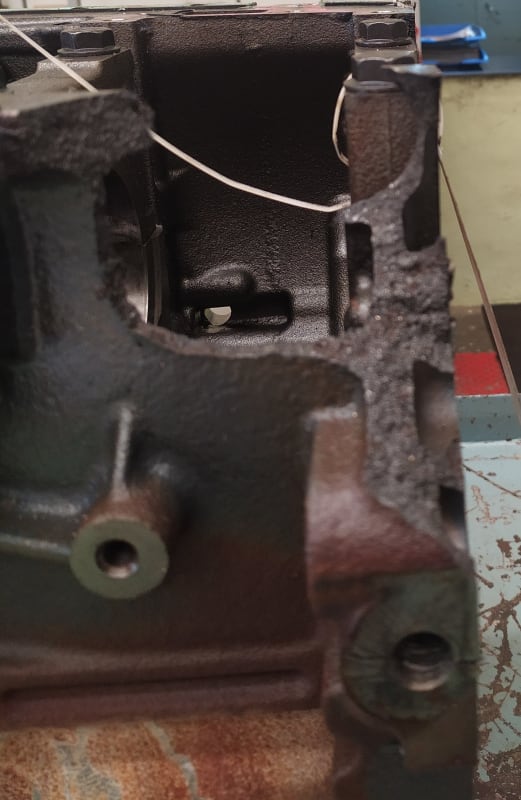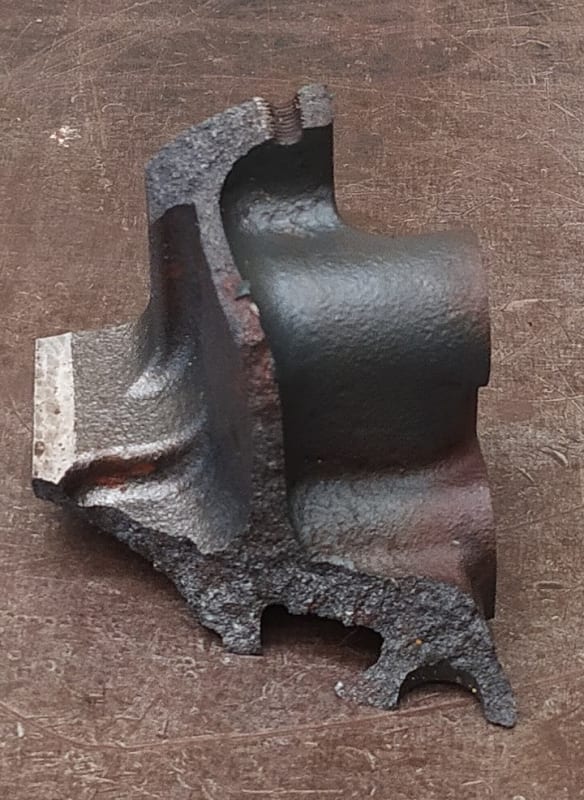Navigation
Install the app
How to install the app on iOS
Follow along with the video below to see how to install our site as a web app on your home screen.
Note: This feature may not be available in some browsers.
More options
You are using an out of date browser. It may not display this or other websites correctly.
You should upgrade or use an alternative browser.
You should upgrade or use an alternative browser.
Fracture in diesel engine block near mounting --- are there any indications
- Thread starter akv1234
- Start date
- Status
- Not open for further replies.
TugboatEng
Marine/Ocean
From the pictures in your other post, there are multiple fracture locations. This indicates a sudden impact type of failure. This engine block was dropped.
- Thread starter
- #3
Pretty big leap to diagnose the block being dropped from just 3 pictures. I cannot even make out directions of fracture propagation (typical if this is a gray iron casting). For this one, you really need to have an experienced failure analyst conduct a structured investigation.
TugboatEng
Marine/Ocean

This picture tells a lot. The engine has been in service. A defect leading to this severe of a break would have happened immediately.
There is a second crack. What is the likelihood of two such failures happening simultaneously on an engine that is running? Any one of them would have caused serious issue.
The damage is on a corner, much more likely to strike first.
There are no beach marks/corrosion so the failure likely happened abruptly.
I suppose a starter or air compressor mounted in that location could break the block, that does happen. But, I don't think it's likely in this case because of the presence of the second crack. There was a lot of displacement of material for that to happen. Heavy duty engines typically mount the starter in the bell housing so that's unlikely to break the block.
MrFailure is right, everything I say is speculation. These are just my initial observations.
Not if the defect leads to progressive failures. For example, fatigue damage from a defect happens over time.TugBoatEng said:A defect leading to this severe of a break would have happened immediately.
Quite a bit actually, especially if both cracks initiated and propagated from the same cause. For example, vibrations can cause multiple fatigue cracks at the same time. Also, the presence of one crack as it is growing (e.g. the fracture) can change the dynamics of loading, allowing a second crack to initiate and propagate.TubBoatEng said:There is a second crack. What is the likelihood of two such failures happening simultaneously on an engine that is running?
Stress risers associated with corners make them great locations for any crack to initiate.TugBoatEng said:The damage is on a corner, much more likely to strike first.
Not always true. Some materials like gray cast iron do not exhibit these features. Gray iron failures in fact are difficult to diagnose fracture mode for that very reason, so other methods have to be employed to identify likely mode.TugBoatEng said:There are no beach marks/corrosion so the failure likely happened abruptly.
There is not enough information in the pictures to identify fracture mode at this point. You can look for evidence to determine if the block had been dropped by looking for distortion or impact damage in the area it may have been dropped on.
TugboatEng
Marine/Ocean
MrFailure said:You can look for evidence to determine if the block had been dropped by looking for distortion or impact damage in the area it may have been dropped on.

Yes, you can see the distortion as the crack in the picture is "open".
- Status
- Not open for further replies.
Similar threads
- Question
- Replies
- 10
- Views
- 30
- Replies
- 7
- Views
- 8
- Locked
- Question
- Replies
- 4
- Views
- 10
- Locked
- Question
- Replies
- 14
- Views
- 23
- Locked
- Question
- Replies
- 11
- Views
- 18


